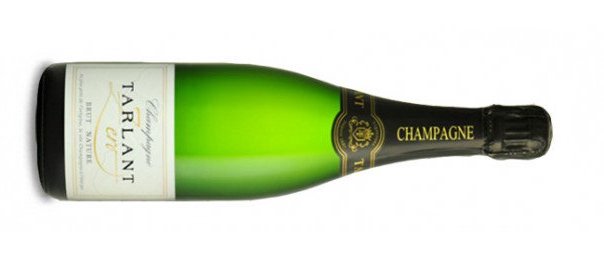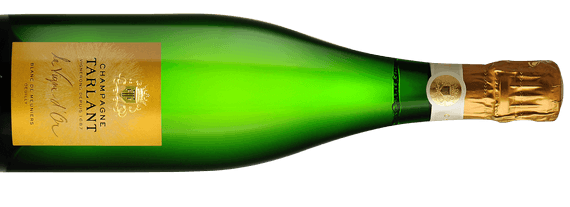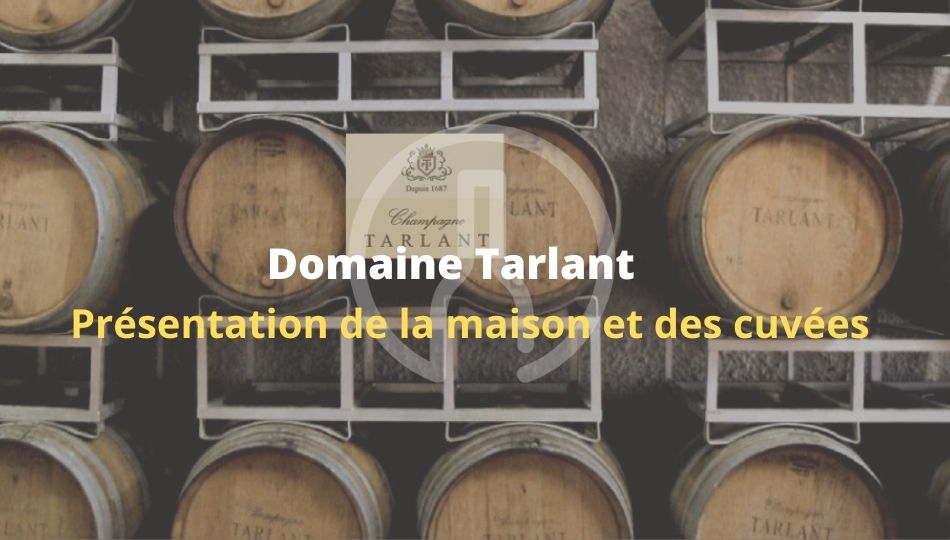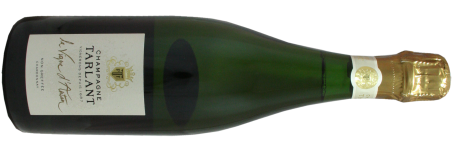Welcome to the Comptoir des Millésimes blog. This is a complete guide to the Tarlant Champagne House. Take a look at our other winery articles.
History of the domain :
Located in the heart of the Vallée de la Marne, à Oeuilly this small champagne Tarlant is one of the most progressive estates of its generation, with 13 ha. They have lived on this land since 1687. Benoit and his sister Mélanie Tarlant represent the 12th generation of winegrowers to succeed on the Champagne family estate. Two-thirds of their champagne is produced in oak barrels, giving a pronounced balance on the palate with a vinous texture. Every member of the family is involved in making the vineyard prosper. Brother Jean Mary Tarlant has taken over the management of the vineyard, which now comprises 14 hectares of vines spread over 55 hectares and 4 communes. His wife Michelle Tarlant despite her youth, has become the estate's communications manager. This family story is set to go on and on. The grape varieties used are : pinot noir chardonnaypinot meunier, and even pinot blanc. To bring out the best in the terroirs, the vines are meticulously worked. These terroirs are quite different and can contain limestone, chalk, sand and pebbles. Each parcel is individually pressed, and vinification takes place in barrels, which helps to give the best structure for a good wine. Malolactic fermentation was not carried out on any of the wines in order to maintain their freshness. After the vinification period comes the blending phase, which makes all the difference. Visit grandfathera centenarian, makes sure that the wines are correct to maintain their styles. The minimum ageing period is 5 years. some or the vintage.
The great vintages of Domaine Tarlant :
-
Champagne Tarlant Zéro Brut Nature :

The blend is made up of 3 Champagne grape varieties: Chardonnay, Pinot Noir and Pinot Meunier. Aged in stainless steel vats and oak barrels. Aging wines in barrels. This is a brut champagne with no dosage. The color is golden, with green reflections and fine bubbles. On the nose, tangy notes of lemon and tangerine evolve into more mature aromas of wax and honey. The nose is very elegant and straightforward. On the palate, the acidic notes of the nose and a fresh, straightforward structure prevail. Perfect with seafood, but also as an aperitif.
-
Champagne Rosé Brut Nature Tarlant :

A champagne bursting with freshness and vivacity. The blend is made up of 85 % of Chardonnay, followed by 15 % of Pinot Noir. It is aged in stainless steel vats and oak barrels, while the reserve wines used in the blend are aged in barrels. Bright coral pink, studded with fine bubbles. On the nose, she reveals notes of blood oranges, evolving towards red fruits and finishing with hints of pepper and spices. The palate offers a silky texture and notes of exotic fruit, redcurrant, raspberry and hints of spicy vanilla. The palate is vinous, structured and intense. Goes well with red fruit desserts.
-
Champagne Tarlant Cuvée Louis :

It's a champagne that conveys emotion and tradition. This cuvée is made from 50 % of Chardonnay and 50 % of Pinot Noir from the locality of Les Crayons à Oeuilly where 65-year-old vines can be found. It was vinified in oak barrels with a maximum of 4 wines without fermentation. malolactic. The dosage is very low: 3 g/L, which preserves all the champagne's freshness. The color is golden yellow with amber highlights, and the nose reveals a generous, expressive champagne with mature, gourmet aromas and a hint of spice. On the palate, the wine is superbsmooth and complex, developing honeyed notes supported by a fine vinosity . It goes very well with fine cuisine.
-
Champagne Tarlant La Vigne Royale 2003 :

It is composed of 100 % of Champagne Pinot Noir from the Lieu-dit " Mocque Tonneau" in Celles-lès-Condé, Principality of Condé, hard limestone subsoil. Vinification takes place in oak barrels, with fermentation in oak and oak vats. batching. Cis a extra brut au pPerennial flowering with a deep golden color. On the nose, intense aromas of dried flowers and roses. On the palate, it's creamy, opulent and complex, with marzipan, herbs and licorice. The finish is elegant and perfectly suited to the table.
-
Champagne Tarlant La Vigne d'or 2004 :

The unique Pinot Meunier grape takes its pleasure in the Marne Valley on its terroir of excellence: Sparnacian, it's from this land that the golden vine sees thee dayplanted there over 65 and cultivated carefully by great-grandfather Georges Tarlant. Vinification took place in oak barrels, with the first fermentation in casks and the second in oak. batching with storage until May. No dosage is required for this cuvée nature extra-brut. The color is deep and amber, with strings of dynamic bubbles. The baroque, gourmand nose expresses aromas of pastry, praline and roasted nuts, leading to notes of stewed apples and pears. The palate is ample and plays on the ripe bitters of the Meunier de Pierre de Bellevue. The finish reveals almond and walnut flavors. It will be tuned to a faith and a pear chutney.
-
Champagne Tarlant " La Vigne d'Antan " :
It is just 100 % of pre-phylloxera Chardonnay and can be drunk now or in a few years' time. The colour of this cuvée is made of gold clear with fine bubbles, the nose is intense, with mellow fragrances of flowers white like acacia, the lime blossom and Reine des reinettes, the original aroma of Chardonnay. The palate is clean and pure, revealing a silky, mineral feel with nuances of white fruit and delicate, lacy hazelnut and almond aromas.
We hope you enjoy this article on the Tarlant estate and the history of these vintages. Discover also our Tarlant allocations at the best price and 100% in stock on the site :






![✨ Comptoir des Millésimes honors Champagne's great winemakers ✨[LINK TO THE ORGANIC CELLAR]We've selected 11 exceptional estates that reveal the full richness of Champagne terroir through unique, refined cuvées. Hugues Godmé - In Verzenay, this family-run biodynamic estate offers precise, vibrant champagnes with a beautiful mineral tension.Egly-Ouriet - A benchmark for the Montagne de Reims, its powerful champagnes, aged for long periods in barrel, impress with their complexity.Moussé Fils - In Cuisles, the Meunier grape is king. Pertois-Moriset - Pure, taut Chardonnay Grands Crus for lovers of chalky finesse. A fine address in Mesnil-sur-Oger.Geoffroy - In Aÿ, this domaine produces fine champagnes, carefully crafted and barrel-aged to reveal the full complexity of the terroir.Larmandier-Bernier - Biodynamic viticulture, exceptional parcels and purity. Crystal-clear, intense champagnes for connoisseurs.Roger Coulon - Eight generations of expertise at Vrigny. Balanced, subtle and elegant champagnes.A. Bergère - In Avize, a dynamic house offering expressive, fruity and accessible cuvées.Adrien Renoir - A promising talent from Verzy, he produces fine, complex champagnes with a true sense of terroir.De Sousa - Emblematic house in Avize. Richness, depth, long ageing: Chardonnay at its peak.Pierre Paillard - In Bouzy, the family magnifies Pinot Noir with vinous, racy and sincere cuvées.📦 Order now on our website#ComptoirdesMillésimes #Champagne #VigneronsIndépendants #GrandVin #ChampagnesdeTerroir #LivraisonRapide](https://www.comptoirdesmillesimes.com/blog/wp-content/plugins/instagram-feed/img/placeholder.png)